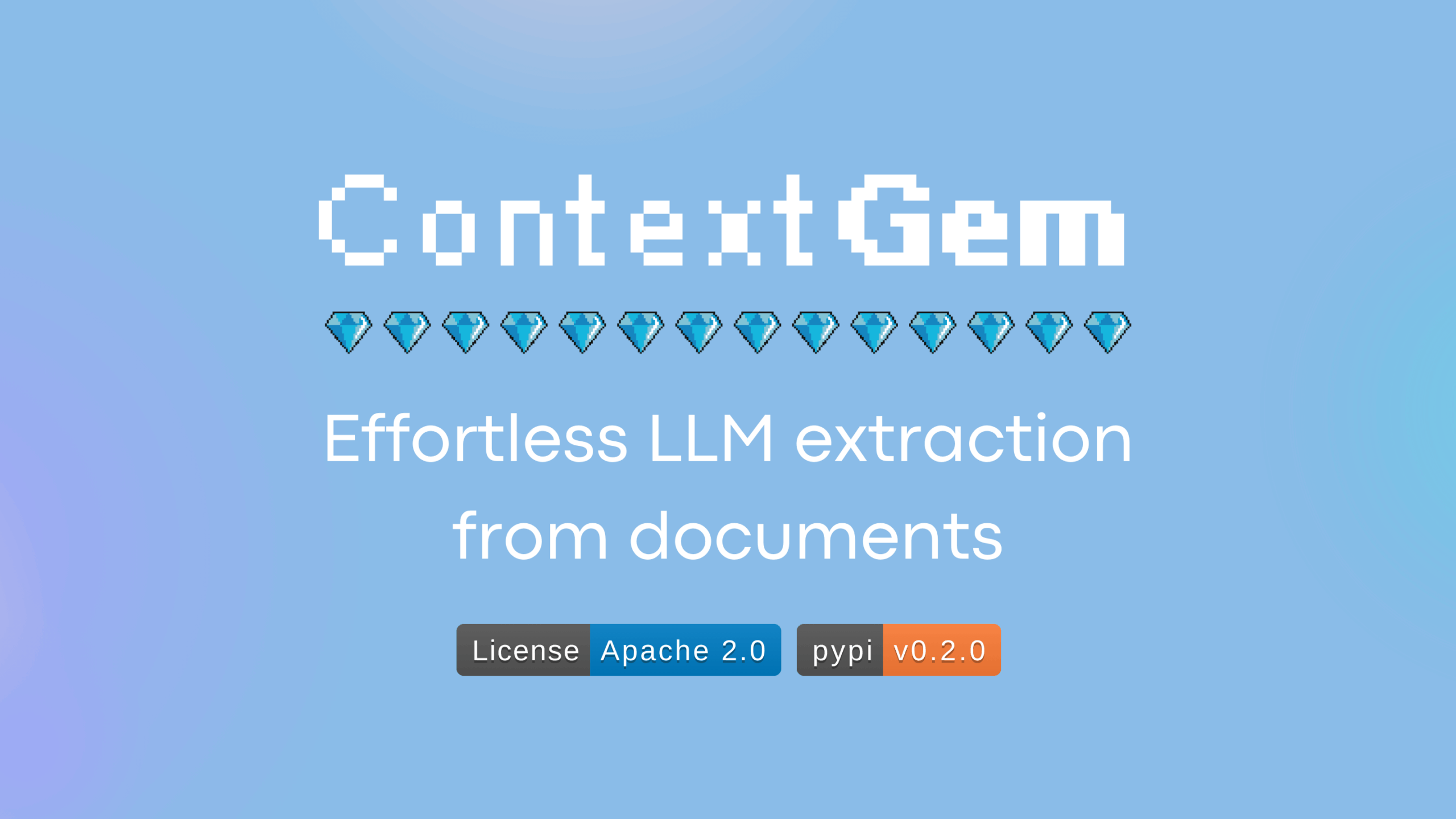Table of Contents
Overview
In the ever-evolving landscape of AI, extracting valuable information from documents can be a daunting task. Enter ContextGem, a game-changing, open-source framework designed to simplify the extraction of structured data and insights from documents using the power of large language models (LLMs). This innovative tool offers powerful abstractions to minimize boilerplate code, empowering developers to build complex extraction workflows with remarkable efficiency. Let’s dive into what makes ContextGem a standout solution for data extraction.
Key Features
ContextGem boasts a comprehensive suite of features designed to streamline the extraction process:
- Automated Dynamic Prompts: ContextGem intelligently generates prompts tailored to the specific document and extraction task, optimizing LLM performance.
- Data Modeling and Validation: Define the structure of your extracted data and ensure its quality with built-in validation mechanisms.
- Precise Reference Mapping (paragraphs & sentences): Accurately pinpoint the exact location of extracted information within the original document, down to the paragraph and sentence level.
- Justifications for Extractions: Understand why the LLM extracted specific data points with clear justifications, enhancing transparency and trust.
- Neural Segmentation (SaT): Leverage neural segmentation techniques to intelligently divide documents into meaningful segments for more accurate extraction.
- Multilingual Support: Process documents in multiple languages, expanding the scope of your extraction capabilities.
- Unified Extraction Pipeline: Create a single, consistent pipeline for all your extraction tasks, simplifying management and maintenance.
- Concurrent I/O Processing: Process multiple documents simultaneously, maximizing throughput and reducing processing time.
- Usage and Cost Tracking: Monitor LLM usage and associated costs, enabling better resource management and budget control.
- Support for Multiple LLM Providers: Choose the LLM provider that best suits your needs, with support for various cloud-based and local models.
How It Works
ContextGem simplifies document processing by integrating seamlessly into your Python applications. Developers define extraction tasks declaratively, specifying the desired data structure and extraction logic. The framework then handles the complexities of prompt generation, data modeling, and extraction execution. ContextGem supports both cloud-based and local LLMs, offering flexibility in deployment and cost management. This allows users to easily leverage the power of LLMs without getting bogged down in the intricacies of prompt engineering and data handling.
Use Cases
ContextGem’s versatility makes it suitable for a wide range of applications:
- Legal Contract Analysis: Extract key clauses, obligations, and dates from legal contracts for efficient review and analysis.
- Financial Document Processing: Automate the extraction of financial data from reports, statements, and invoices.
- Invoice Data Extraction: Streamline accounts payable by automatically extracting invoice details like vendor names, amounts, and due dates.
- Technical Documentation Analysis: Extract specifications, requirements, and procedures from technical manuals and documentation.
- Research Data Extraction: Collect and organize data from research papers, studies, and reports.
- Academic Paper Summarization: Generate concise summaries of academic papers, highlighting key findings and methodologies.
Pros & Cons
Now, let’s weigh the advantages and disadvantages of using ContextGem.
Advantages
- Open-source and free to use: Eliminates licensing costs and fosters community-driven development.
- Reduces development time by minimizing boilerplate code: Speeds up the development process and allows developers to focus on core logic.
- Supports multiple LLM providers and local models: Offers flexibility and control over LLM selection and deployment.
- Active community and comprehensive documentation: Provides ample resources for learning and troubleshooting.
Disadvantages
- Requires familiarity with Python and LLM concepts: May present a learning curve for users unfamiliar with these technologies.
- May need customization for specific use cases: Complex or highly specialized extraction tasks may require additional configuration and coding.
How Does It Compare?
When considering alternatives, it’s important to understand how ContextGem stacks up against the competition:
- StructGPT: While StructGPT focuses on zero-shot reasoning over structured data, ContextGem emphasizes minimal-code extraction workflows, making it easier to build and maintain complex extraction pipelines.
- KnowCoder: KnowCoder utilizes code-style schema representations, whereas ContextGem offers declarative extraction pipelines with built-in abstractions, simplifying the development process for users who prefer a more declarative approach.
Final Thoughts
ContextGem presents a compelling solution for developers seeking to streamline document data extraction using LLMs. Its open-source nature, powerful features, and focus on minimizing boilerplate code make it a valuable tool for a wide range of use cases. While some familiarity with Python and LLM concepts is required, the benefits of increased efficiency and flexibility make ContextGem a worthwhile investment for any organization looking to unlock the power of unstructured data.
